Araneomorphae, Tetragnathidae, Genus Leucauge
Posted: Sun Apr 19, 2015 5:05 pm
Genus Leucauge (Silver Marsh Spider, Silver Vlei Spider)
A diurnal spider, resembling a small version of Nephila but has no tibial brushes on the legs. The cephalothorax (head and thorax) and legs are a plastic green in appearance while the elongated abdomen is silver with green infusions while some species have yellow and red markings as well. Eight species of this pantropical genus are recorded from South Africa. Leucauge is derived from Greek "leukos" means "white"). The horizontal to vertically inclined (45%) web is situated amongst low vegetation, usually about 500 mm or lower, often in association with damp vlei seepages in all habitats.
Lifestyle
Web dwellers (orb-web): the webs are mostly built in vegetation near water; abundance: rare.
Body size
6-18 mm (males only slightly smaller, chelicerae in male with strong spurs).
Diagnostic characters
Colour: carapace brownish with abdomen bright silver distinctly decorated with green, white, red and bronze patterns.
Carapace: longer than wide.
Eyes: 8 eyes in 2 evenly spaced rows.
Chelicerae: variable: short and thick and sometimes with strong large teeth and strong projecting spurs, which are strongly en-larged in males.
Abdomen: variable from elongate and cylindrical in some species extending caudally past spinnerets, to round or ovoid.
Legs: 3 claws, legs long and slender with posterior femora with double fringe of trichobothria on prolateral surface of basal half.
Web and retreat
Web: large, complete orb-webs; the inclination of the webs varies from vertical to horizontal, and is most often at a sharp angle to vertical. The hub is open, with clear, widely spaced viscous spirals (15-30).
Rretreat: absent
Habitat
They are more commonly found in wet grassland, in vleis and marshes and humid forests.
Behaviour
Leucauge species spin their large orb-webs in the morning or during the day and sometimes re-use the frame and anchor lines. They are diurnal and commonly seen during the day.
Prey
A variety of flying insects.
A diurnal spider, resembling a small version of Nephila but has no tibial brushes on the legs. The cephalothorax (head and thorax) and legs are a plastic green in appearance while the elongated abdomen is silver with green infusions while some species have yellow and red markings as well. Eight species of this pantropical genus are recorded from South Africa. Leucauge is derived from Greek "leukos" means "white"). The horizontal to vertically inclined (45%) web is situated amongst low vegetation, usually about 500 mm or lower, often in association with damp vlei seepages in all habitats.
Lifestyle
Web dwellers (orb-web): the webs are mostly built in vegetation near water; abundance: rare.
Body size
6-18 mm (males only slightly smaller, chelicerae in male with strong spurs).
Diagnostic characters
Colour: carapace brownish with abdomen bright silver distinctly decorated with green, white, red and bronze patterns.
Carapace: longer than wide.
Eyes: 8 eyes in 2 evenly spaced rows.
Chelicerae: variable: short and thick and sometimes with strong large teeth and strong projecting spurs, which are strongly en-larged in males.
Abdomen: variable from elongate and cylindrical in some species extending caudally past spinnerets, to round or ovoid.
Legs: 3 claws, legs long and slender with posterior femora with double fringe of trichobothria on prolateral surface of basal half.
Web and retreat
Web: large, complete orb-webs; the inclination of the webs varies from vertical to horizontal, and is most often at a sharp angle to vertical. The hub is open, with clear, widely spaced viscous spirals (15-30).
Rretreat: absent
Habitat
They are more commonly found in wet grassland, in vleis and marshes and humid forests.
Behaviour
Leucauge species spin their large orb-webs in the morning or during the day and sometimes re-use the frame and anchor lines. They are diurnal and commonly seen during the day.
Prey
A variety of flying insects.
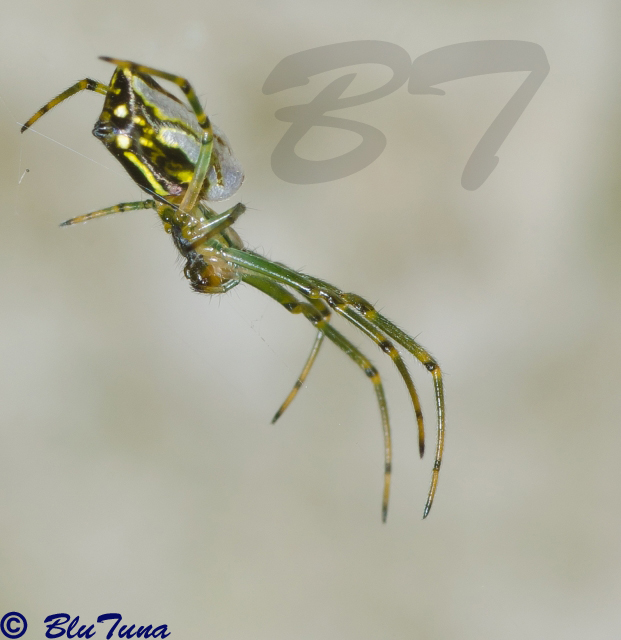
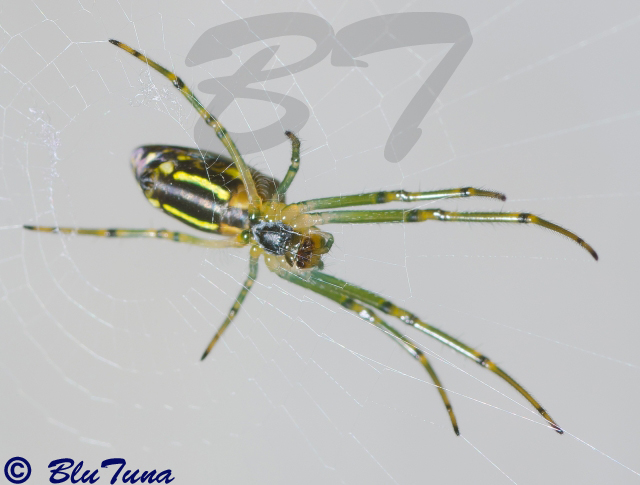
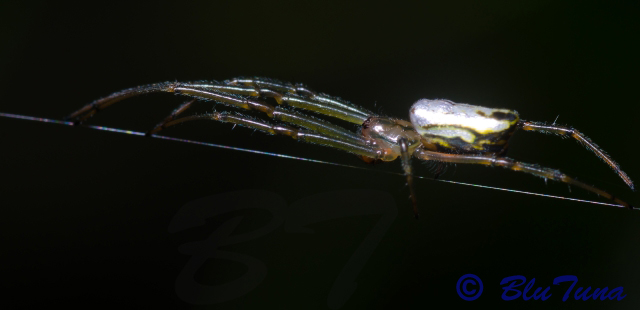
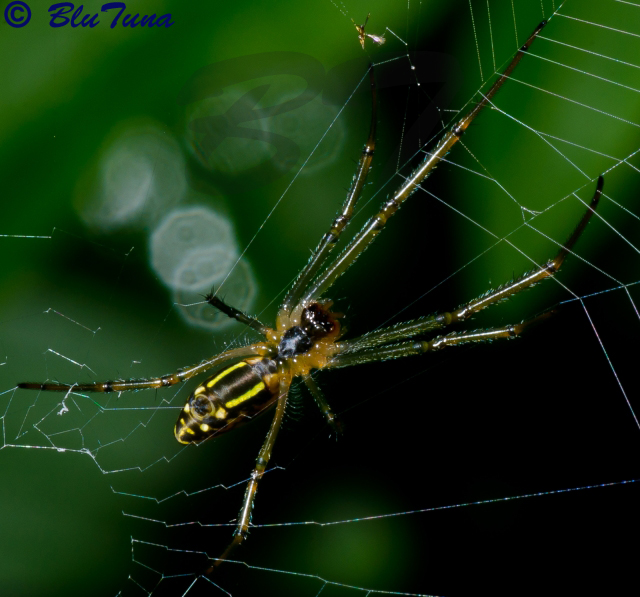
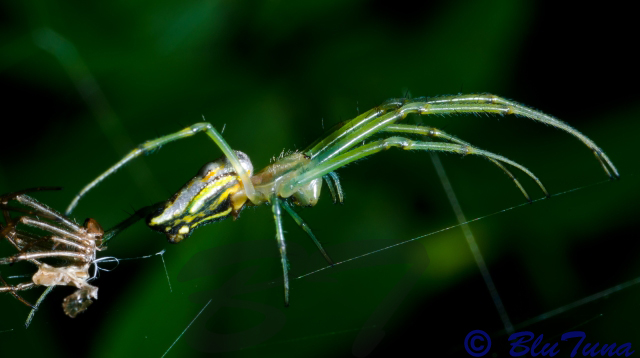
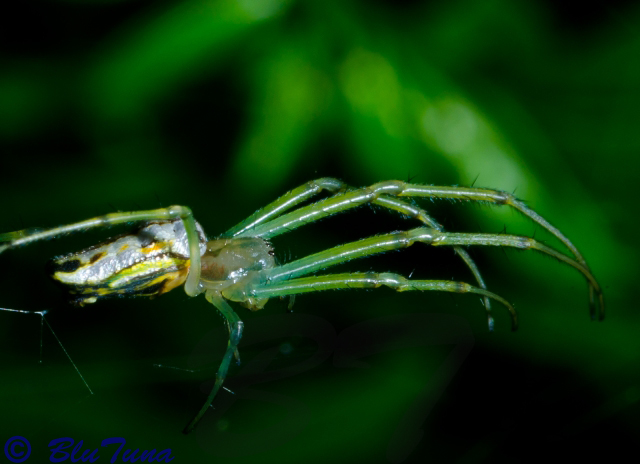
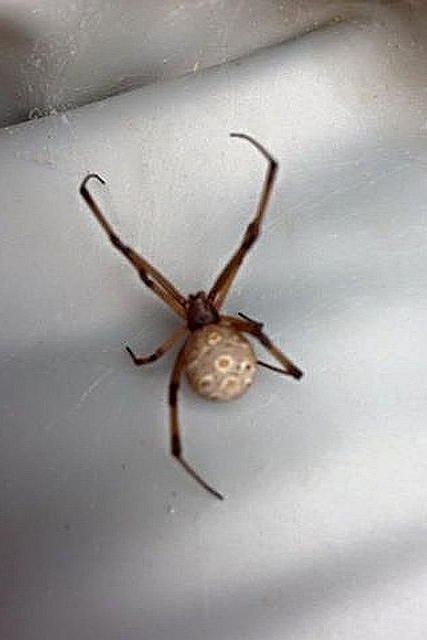 © Flutterby
© Flutterby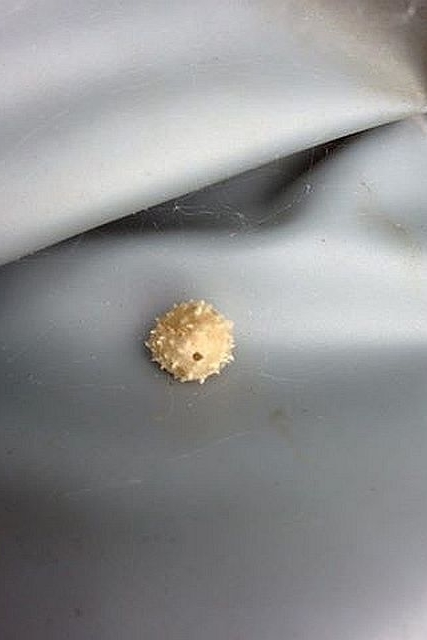 © Flutterby
© Flutterby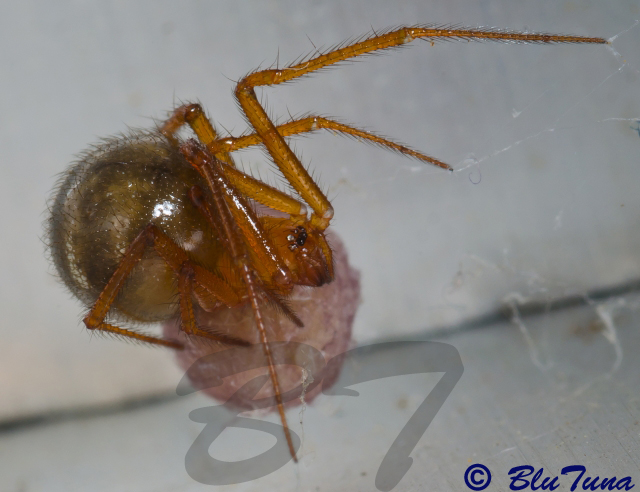
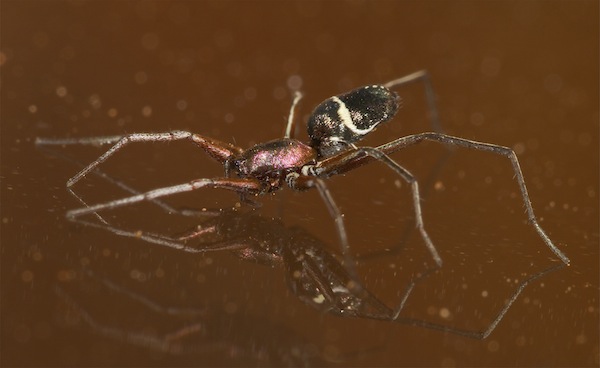
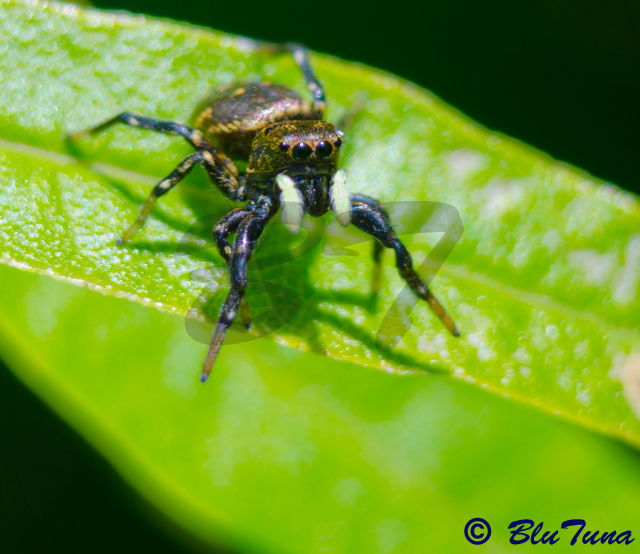 © BluTuna
© BluTuna